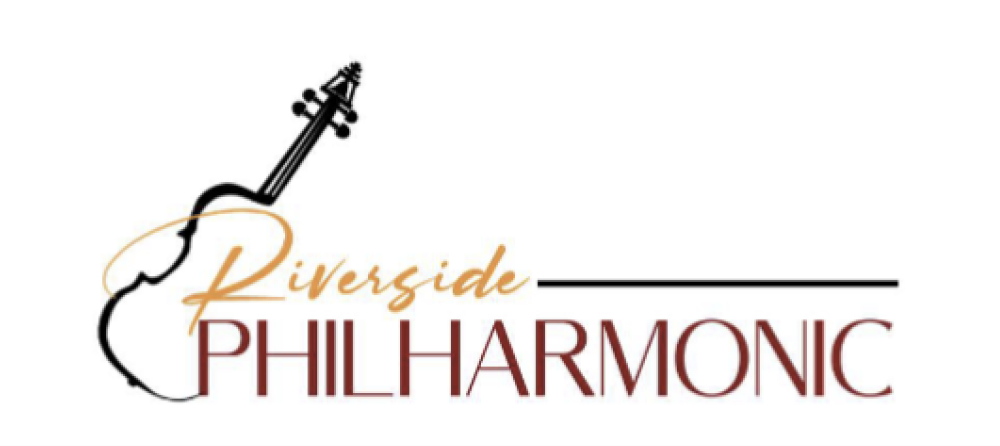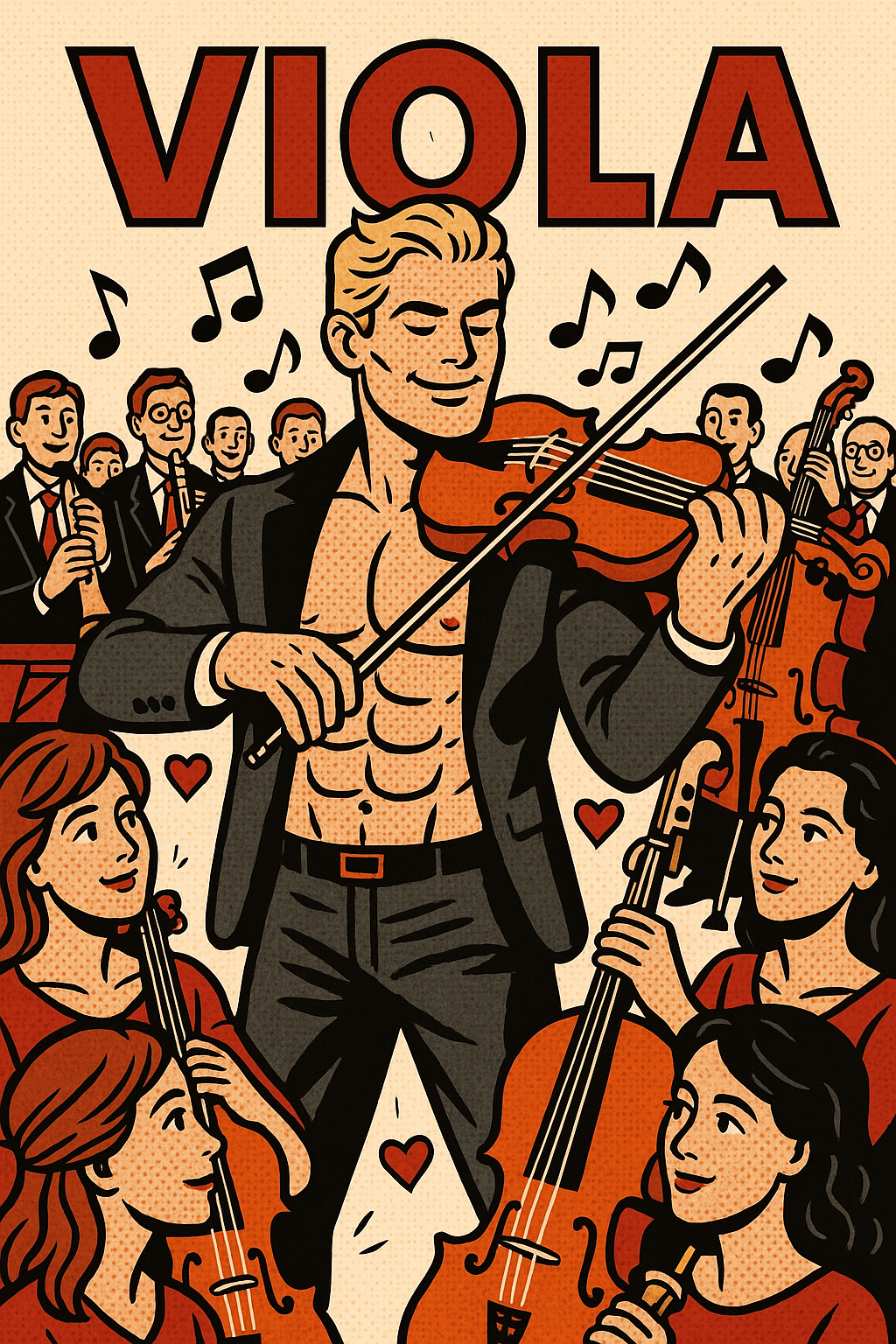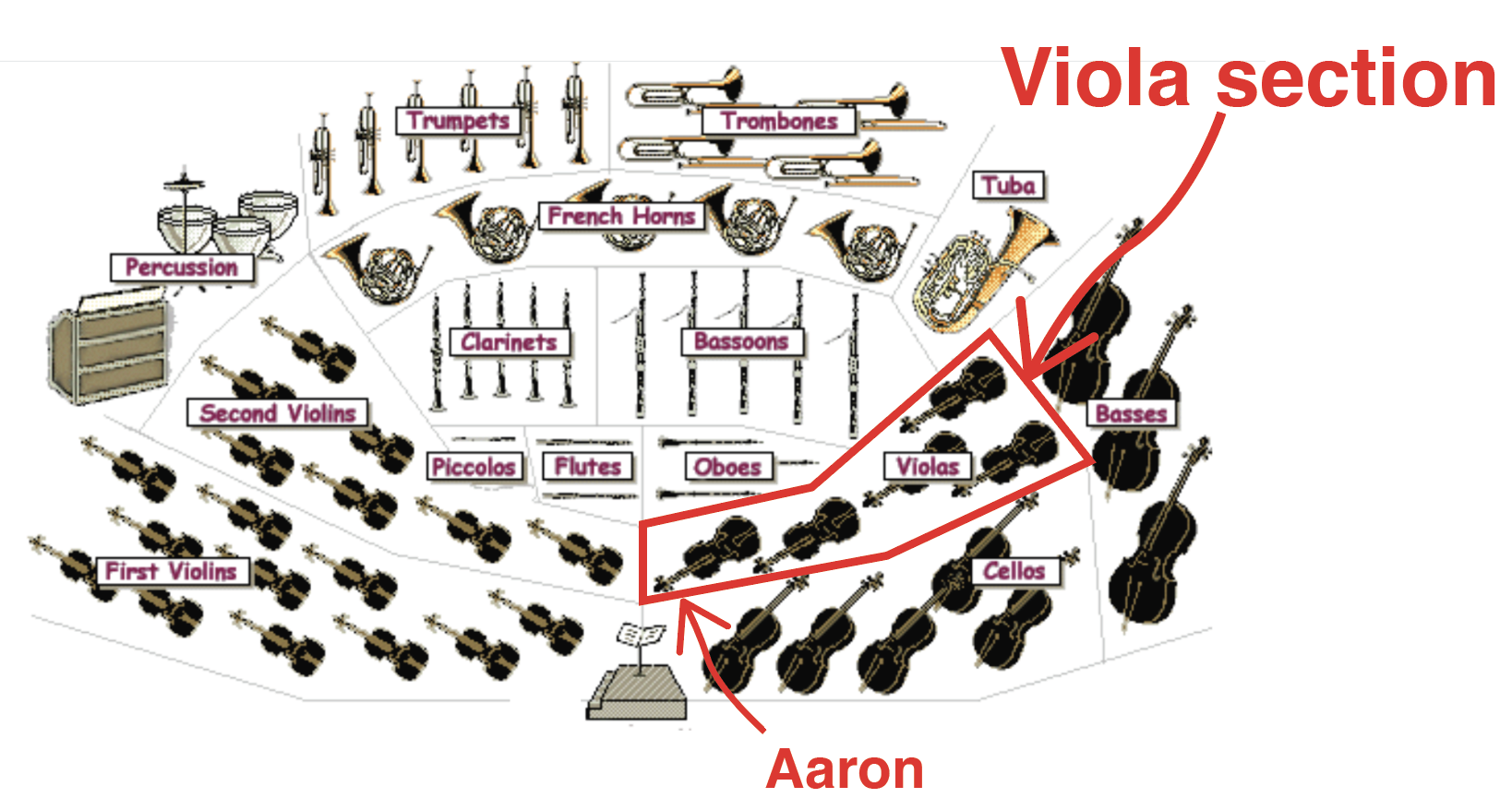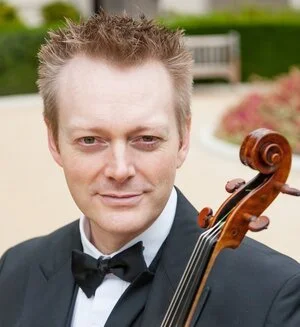Viola
Making hearts skip a beat, one deep tone at a time…
Interview with Aaron:
How did you first get started with the viola, and how long have you been playing?
I started on the violin in the 5th grade in Bellingham, Washington. In the 6th grade, the orchestra needed violists so I picked it up. I didn't take the viola seriously until I was in college and then I switched to the viola exclusively. The viola, it turns out, liked me better.
For those unfamiliar with orchestral roles, how would you describe the viola’s place in a symphonic piece?
Often the viola's role is to accompany the melody. We sometimes get the melody, but not often. In earlier centuries, violas were considerably larger and unwieldy. This led to slower moving notes that functioned as harmonic texture to fill out the chords. As time went on, smaller violas were made which allowed for more virtuosity, giving composers a broader range of ways to use the viola.
The viola is often the subject of light-hearted teasing in orchestras. Why do you think that is—and do you have a favorite viola joke to share?
This very much ties into the fact that violas were originally larger with slower moving notes. I've seen some historical references to it as the 'Pensioner's Instrument', and a lesser endeavor, the butt of many jokes. However, the composers in the 20th Century have ignored the past prejudices and have greatly increased the technical demands on the violist. Unfortunately, inertia has kept the Viola Jokes alive (I often think of it as Scapegoating, but don't tell the other instruments).
An example that immediately comes to mind would be, "What's the difference between a Violin and a Viola? ... The Viola burns longer".
What’s your earliest memory of attending a symphony concert, and how did it influence you?
I remember sitting in a school auditorium and listening to the local orchestra play a short concert for the schools. Unfortunately, I don't remember much about it since I was in first grade. The school program in fifth grade, while providing me with an excellent excuse to avoid a less-than-excellent teacher, also provided me with a career goal. By sixth grade, I knew I wanted to be a professional musician. In eighth grade, I joined the orchestra I had seen when I was in first grade. My first concert with them was The White Peacock by Charles Griffes and The Firebird by Stravinsky. My first lesson: don't play in the rests (silences).
In your view, what is it about music that makes it such a powerful, life-affirming force?
For me, music has always been an emotional expression. I remember being a very angsty teenager, and I thought Shostakovich really captured my emotions, even without understanding the political pressures of his life. His music spoke for itself. Great music doesn't just convey the emotions of the human experience; it also makes us feel them. Sometimes this can be overwhelming and uncomfortable, but even those moments are important because they acknowledge the breadth and depth of the human experience. At times, we can identify with those harsh moments and feel less isolated.
What does being a part of the Riverside Philharmonic mean to you—both personally and musically?
With all that changes, it's been remarkable to be anchored by our love of music and the opportunity to share that with the community.
When you're not performing, what are some of your favorite ways to unwind or explore creativity?
Practicing for future performances. It's not really unwinding, but there's joy in learning and improving. It's a double-edged sword: there's always something to improve / there's always something to improve.
Away from music, I'm learning to keep bonsai trees and orchids alive. I sometimes read, paint, and do yoga, but not often enough. I have an obsession with a specific kind of Chinese tea called Pu'er, but I try not to talk about it because I end up sounding unhinged.
And finally, what are your favorite local spots to grab a bite in Riverside?
Before a concert, I enjoy the restaurant, ProAbition. After a concert I've been known to enjoy The Salted Pig if the concert is out early enough, and if not I try to find a Starbucks that's still open for the drive home.
Featured Orchestra Musician:
Aaron Oltman
Violist
Education corner: Viola
The viola section plays a key role in the orchestra:
The “Glue” of the String Section: The viola often acts as the link between the first and second violins, which play in the higher registers, and the cellos and basses, which occupy the lower registers. By filling in the middle range, the viola contributes to the overall blend and balance of the string section, helping to create a more cohesive sound across the ensemble.
Counter-Melody or Harmonization: The viola frequently plays counter-melodies, providing interesting contrasts to the main melodic lines played by the first violins or other instruments. This adds richness and complexity to the overall orchestral texture.
Creating Tension and Drama: The viola's darker, more robust sound can bring emotional depth to music, often used to create tension or drama, especially in more somber or intense moments of the composition. It can evoke a sense of melancholy, mystery, or grandeur.
Expression of Musical Themes: The viola is often tasked with subtly reinforcing key themes or motifs, especially in orchestral works with more complex musical structures. Its ability to project warmth and resonance can give these themes a sense of continuity and depth.
Occasional Solos (That Always Come Too Suddenly!): Although the viola’s role is primarily to support the orchestra, it does occasionally take center stage with a solo. These moments are often unexpected, and violists, with their strong sense of humility, might joke that these solos always come at the least anticipated moment—making the sudden spotlight a moment of both pride and nervousness!
Featured Previously:
the Violin
Interview with Sam Fisher
Meet our tenured musicians
-
Sam Fischer
Violin, Concertmaster
-
Anna Kostyuchek
Violin
-
Jennifer Y. Takamatsu
Violin
-
Linda Wilson
Violin
-
Michelina Wright
Violin
-
Aaron Oltman
Viola
-
Rachel L. Coosaia
Cello
-
James F. Bergman
Double Bass
-
Lisa J. Gass
Double Bass
-
Eileen M. Holt
Principal Flute
-
Julie R. Long
2nd Flute
-
Rong-Huey Liu
Principal Oboe
-
Linda Silva
Clarinet
-
Duncan F. Massey
Principal Bassoon
-
William J. Wood
Second Bassoon
-
David L. Scott
Principal Trumpet
-
David A. Etterbeek
2nd Trumpet
-
Steven H. Suminski
Trombone
-
Philip M. Keen
Bass Trombone
-
Scott W. Sutherland
Principal Tuba
-
Sarah C. Bach
Principal Horn
-
Amy M. Sanchez
2nd Horn
-
Laura K. Brenes
3rd Horn
-
Danielle R. Squyres
Principal Percussion
-
Corey Ritter
Percussion
-
Kris R. Mettala
Timpani




